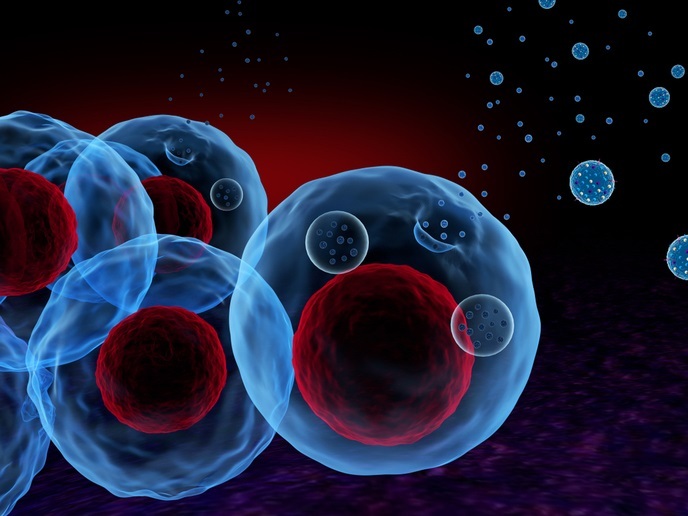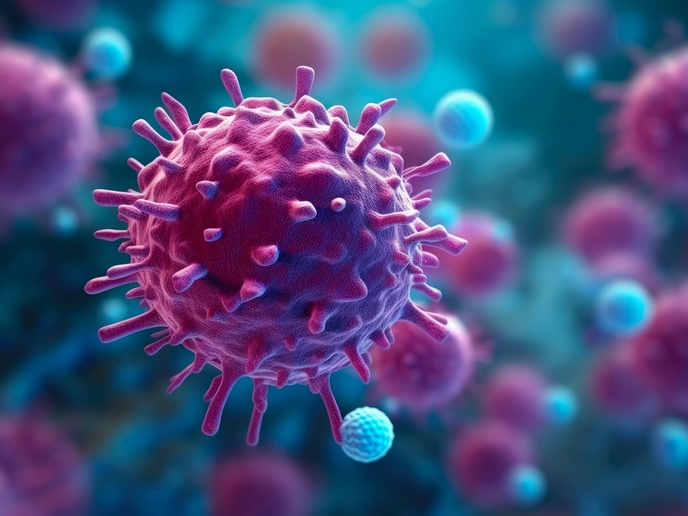A novel sensor for cancer-derived exosomes
Exosomes are membrane-bound vesicles of up to 150 nm in size, which are secreted from cells. They contain various biomolecules and circulate in body fluids such as saliva, urine and blood. Emerging evidence indicates that exosomes could serve as non-invasive biomarkers for cancer diagnosis. However, the quantitative determination of exosomes in clinical diagnosis presents a significant challenge.
An innovative biosensor
Undertaken with the support of the Marie Skłodowska-Curie programme, the ExoSensor project developed an exosome biosensor suitable for the point-of-care testing (POCT) diagnosis of pancreatic cancer. “The sensor was designed to offer a universal technology for clinical cancer diagnosis through monitoring of circulating exosomes,” explains the group leader Khuloud Al-Jamal. The technology relies on aptamers, small oligonucleotides known to bind to target molecules with high specificity. As a first step, exosomes are isolated from different body fluids and are conjugated to beads. Then biotin aptamers bind to exosome surface markers such as tetraspanin CD63. These are detected through a secondary streptavidin aptamer linked to the enzyme horseradish peroxidase (HRP). The sensor detects the conversion of the colourless HRP substrate dopamine into polydopamine that emits a brown colour. The coloured signal produced within 10 minutes is proportional to the exosome surface marker and hence to the quantity of exosomes. The biosensor was successfully employed to detect breast cancer-derived exosomes by targeting the exosomal biomarker human epidermal growth factor receptor 2 (HER2). It was also used to detect pancreatic cancer-derived exosomes by targeting integrin alpha-v beta-6, a new potential biomarker for pancreatic cancer diagnosis.
Advantages and future prospects
To date, exosomes have been detected through conventional methods such as flow cytometry, Western blot and nanoparticle tracking analysis. However, these methods require specialised equipment and complex or expensive software, hampering their widespread use at the POCT setting. The ExoSensor project developed a rapid and cost-effective method for the sensitive detection of exosomes through colorimetric quantitation. It proved the feasibility of using this simple technology to detect and quantify exosomes in serum samples with highly sensitive and specific results in a fraction of the time of standard methods. “The specificity of ExoSensor relies on the intrinsic advantage of aptamers in terms of specificity and affinity compared to antibodies,” emphasises Al-Jamal. Moreover, the biosensor requires only small amounts of sample, in the microlitre range, rendering the assay suitable for finger-prick-based blood testing. It also facilitates naked eye detection, which is important for in-field detection and POCT testing. Implementation of the biosensor for cancer screening is expected to improve diagnosis and disease outcome for millions of sufferers worldwide. Especially for pancreatic cancer, where diagnosis is often late and with a dismal prognosis, prompt tumour detection may prolong the life of patients. Considering that exosomes reflect the genetics or proteins originating from parent cells or organs, they can be used for diagnosis, and treatment progression and response of diseases other than cancer. Therefore, the ExoSensor biosensor could help map the exosome profile in these diseases, further contributing to biomarker discovery.
Keywords
ExoSensor, exosomes, biosensor, aptamer, HER2, CD63, breast cancer, pancreatic cancer, integrin alpha-v beta-6







